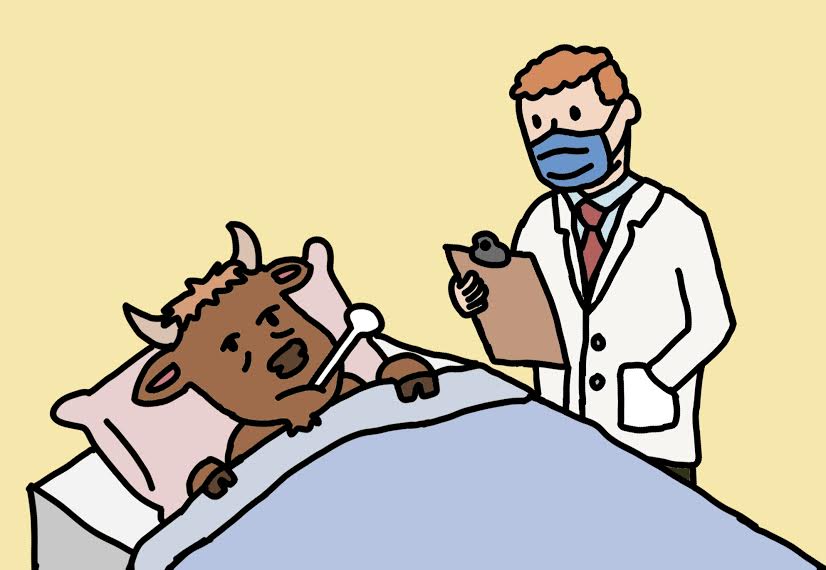Reaping what we’ve sowed: COVID cases spike on campus
October 30, 2020
“Pleasantly surprised” and “cautiously optimistic” are how, before the events of last weekend, I described my feeling about our University’s COVID-19 situation. However, recent developments have thrown our entire community through a loop, with nearly everyone asking the same question: How did this happen?
“I tested positive for COVID-19 on campus. I will not be the last,” headlined an article I wrote for The Bucknellian following the second week of classes. The strong feelings I had in that article mostly reduced into the aforementioned surprise and optimism — at least, before last weekend, when pessimism was manifested with 10 new cases.
My main on-campus job this fall is calling alumni and parents to get them to donate back to the University. While holding these conversations, I felt comfortable touting the COVID-19 Relief Fund, citing the fact that the mitigation measures in place meant we had nearly a month without a single new student case. Alumni and parents were overwhelmingly happy with the handling of the situation and the fact that our community has made it thus far. However, those positive feelings have since fallen into resignation and not-so-subtle ire at our University’s current dilemma.
Effective Saturday, Oct. 24, our University has (rightly so) sequestered itself into solely online classes with, at the time of this writing, nearly a hundred students in isolation housing. I was previously one of those students, and I understand the personal and emotional toll that isolation housing has long term. Walking more than 20 feet in a continuous straight line is one of the things that I missed most in my time in isolation, and I can’t imagine the volume of students who are suffering worse than I did. Fresh air and sunlight are vital to mental well-being, and isolation housing necessitates that those things are forgone in some way. In addition, late Tuesday, University President John Bravman confirmed that about 100 additional isolation rooms had been secured for the fall. With the number of students in isolation only increasing, we now must look at the mental well-being of our school as a whole.
Where did this spike in cases come from? Was it an outbreak in dining? One of the Uptown events gone south? One student forgot to wipe off a desk after class?
In a word, no. The single largest contributor to the spike in cases on campus is likely the numerous, unchecked social events and Supers that have taken place over the previous weeks. Testing enforcement difficulties and duration between tests, compounded with those events, likely hid the magnitude of the problem until our community was forced to confront seven new student cases in a single day.
Our University community is now reaping what we’ve sowed: unsafe situations with lax distancing and masking have caused an unprecedented case spike. Through the veneer of masks on the Malesardi Quadrangle and in Bertrand Library, our community now must confront the nasty underbelly that contributed to our current situation.
While I certainly don’t intend to place the blame for this spike squarely on our peers, I also need to place a good portion of it on our peers. Every single action to contain the virus on campus has been incredibly conservative: distancing in dining facilities, near-obsessive cleaning of academic facilities and the process for when students feel symptoms or, God forbid, test positive.
However, there are major exceptions to this: the first being Public Safety’s and Buffalo Valley Regional Police’s failure to break up those large social events that are essentially an open secret this semester. I’ve listened to multiple firsthand reports observing the prevalent social events, and those enforcement agencies’ failure to act and follow up. One need not even mention the pending lawsuit against the University’s Kappa Delta Rho chapter, a result of the assuredly unsafe, and allegedly criminal, activities this semester. I must have been idealistic to hope that our peers wouldn’t need intervention from a private police force to not throw social events during a pandemic.
Students and faculty are increasingly aware of the looming possibility that the fall semester will be finished remotely, as with our previous spring. This is not to mention the fact that any inability to finish this semester remotely is foreboding for spring 2021. I sincerely hope that this spike will be quickly mitigated with decisive action, not only on the part of administrators but also of students.
Alumni, parents and I quickly agreed on a meaningful point over the phones: remaining on campus for the fall and spring is our paramount priority. Our peers, it seems, either fail to prioritize our education in person or fail to realize that in-person education is tantamount to distancing, masking and forgoing many of the social events that are so characteristic of our University in previous semesters.
Masks stink, distancing stinks and remote classes stink. Actually getting COVID-19 and going to isolation housing, with the risk of having exposed your friends, is even worse. I can speak from personal experience on all of these things. This pandemic will have lasting effects on our University, and will likely create a “post-COVID” world, similar to a “post-9/11” world. This reality is an incredibly important one to digest and understand for us and our peers — we are probably not going back to “normal” anytime soon. Especially for our seniors, staying on campus is the single most important thing for the rest of this semester, and the coming spring semester. Implore our peers, to consider every action taken in the greater context of our situation, and to ask themselves this question: How much do you want to be back in the spring?





















